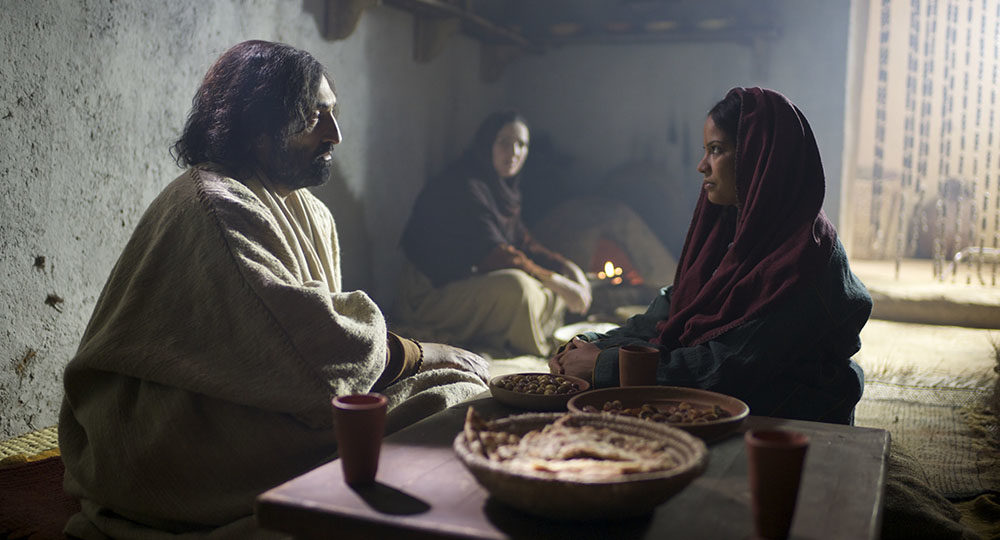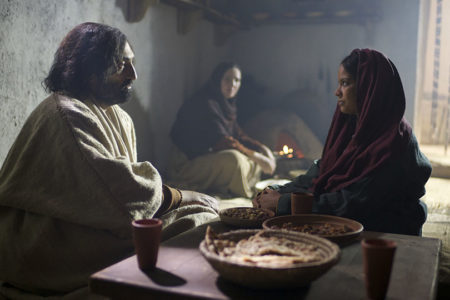Jesus and the Role of Women
It has become quite fashionable among some feminist writers and people sympathetic to the women’s liberation movement to castigate biblical writers for their “sexism.” Often biblical authors have been characterized as “male chauvinists” who attempted to propagate a male-dominated culture that has condemned women to a lowly role for more than two millennia. The entire Judeo-Christian tradition has often been blamed for perpetuating an unhealthy domination of men over women.
A closer examination of the biblical writers against the background of their contemporary culture, however, reveals quite a different picture. Rather than advocating oppressive treatment of women, the biblical authors’ attitudes and actions toward women often went against the grain of their contemporary culture and helped to eventually elevate the status of women. Christianity actually helped liberate women rather than enslave them.
The purpose of this article is to examine one particular example of this truly liberating attitude—the teaching and actions of Jesus regarding the women whom He encountered in His ministry.
Women in Ancient Judaism
During the Old Testament period, women were exempt from the requirement to attend the annual festivals (Ex. 23:17), but they were permitted to attend if they were able to do so (1 Sam. 1:9, 21–22). The Mosaic Law recognized that women who were also wives and mothers had responsibilities in the home that would make public attendance at religious gatherings difficult.
On the other hand, women were able to serve at the door of the Tabernacle (Ex. 38:8), take a Nazirite vow (Num. 6:2), hear the Word of God (Neh. 8:2–3), engage in music ministry (Ex. 15:20–21; 1 Chr. 25:6), and sometimes even prophesy (Ex. 15:21; Jud. 4:6–7). It is clear, however, that the office of priest was limited to male members of the priestly line (Ex. 28:1; Num. 18:1–7). Apart from this restriction, there was far more freedom for women than has often been taught.
In the centuries following the close of the Old Testament, however, the rabbis instituted practices that went beyond the biblical norms and resulted in much greater restrictions of women’s privileges. These rabbinical strictures were not inspired by God and often reflect a wrong attitude toward women and their abilities. These traditions of men should not be identified as biblical commands or practices.
Rabbinical writings in the Mishna and Talmud, although written after the first century, reflect practices that were contemporaneous with the time of Jesus’ earthly ministry. The following four social norms were practiced in Jesus’ day.
- Women were to be shunned in public social contact. Consider the following passage from the Mishna tractate Abot, 1, 5: “Engage not in too much conversation with women. They said this with regard to one’s own wife. How much more does the rule apply to another man’s wife? As long as a man engages in too much conversation with women, he causes evil to himself, for he goes idle from the study of the Torah, so that his end will be that he will inherit gehenna.”
- Women were not to be publicly taught the Torah. This was not true in the Old Testament period (e.g., Josh. 8:35; Neh. 8:2–3). Consider, however, the following passage from the tractate Sota, 10a: “May the words of Torah be burned, than that they should be handed over to women.” In Sota 21b it is written, “Rabbi Eliezer says: Whoever teaches his daughter Torah teaches her obscenity.” This attitude about women’s innate inability to learn the Torah was manifested by having special courts for women in the Second Temple and also in synagogues, where they were separated from men. The latter practice continues to the present time among Orthodox Jews. The idea that women could learn in the same schools with men was not even entertained.
- Women were restricted from orally communicating the Torah to others, even to children. Consider Mishna Kiddushin 4, 13: “An unmarried man must not be a teacher of children, nor may a woman be a teacher of children.” This restriction also applied to publicly reading Scripture in the synagogue (Megillot 73a) and even to pronouncing the benediction after a meal in the home (Mishna Bereshit 7:2).
- Women did not have the right to bear public witness in judicial cases. Baba Kamma 88a declares, “Though the woman is subject to the commandments, she is disqualified from giving evidence.” The first-century Jewish historian, Josephus, characterized the general attitude of his time in Antiquities 4,219: “Let not the testimony of women be admitted because of the levity and boldness of their sex.”
Such burdensome restrictions certainly went far beyond what the Old Testament taught about the woman’s role outside the home. The rabbinic Judaism of the post-biblical period actually involved more reaction than progress. When viewed against this rigid background, Jesus’ attitude toward women in His ministry comes as a breath of fresh air on an arid plain.
Women in Jesus’ Teaching
In His public teaching, Jesus never uttered a word of deprecation or humiliation regarding women. They never were the object of cruel jokes or criticisms, nor were they ever put down for being women. In His condemnation of adultery and divorce in Matthew 5:27–28 and 19:3–10, Jesus taught that women were not to be treated as sex objects. In His sermons, at least twice He used the example of a woman to rebuke the faithless men of His generation: the widow of Zarephath to the men of Nazareth, recorded in Luke 4:25–26, and the Queen of Sheba to the Pharisees, recorded in Luke 11:31. At least twice in His parables Jesus used a woman in a striking way to illustrate faith and determination: the persistent widow in Luke 18:2–8 and the woman searching for the lost coin in Luke 15:8–10.
Jesus never uttered a word that would support the idea of treating women as intrinsically inferior to men. They were always honored in His teaching and never humiliated—a practice modern preachers should take note of and follow. In many churches today, women are subjected to some very cruel comments at their expense, something Jesus never did.
Women in Jesus’ Actions
It was not only in what He taught, but also in how He related to women publicly that Jesus displayed a truly revolutionary attitude—in the sense that He was overthrowing the wrong social conventions of His day. Consider the following three incidents in His ministry, each of which involved a woman.
Jesus’ very public ministry to the Samaritan woman at a well, recorded in John 4:1–42, contravened accepted practice for a Jewish male of His day. He not only talked to the woman in public, He instructed her and revealed Himself to her as the Messiah. The disciples’ astonishment at Jesus’ action is indicated in John 4:27a: “And upon this came his disciples, and marveled that he talked with the woman.” Jesus did not follow the rabbinic dictum to not engage in public discourse with a woman. He always sought to minister to women, rather than ignore them, even if it meant risking the misunderstanding of his male disciples.
The case of the woman taken in adultery, recorded in John 7:53–8:11, provides another example of His compassionate attitude toward women. Jesus rebuked her accusers, who had conveniently ignored the guilty man. While not approving of her action (“go, and sin no more,” Jn. 8:11), His tender dealing with her contrasted sharply with the harsh and hypocritical attitude of those who were so quick to pronounce the sentence of death upon her.
The incident in the house of Mary and Martha, recorded in Luke 10:38–42, provides yet another example of Jesus’ practice of contravening the accepted social norms of His day regarding the instruction of women. Jesus not only took the time to instruct Mary, but His words to Martha indicate that Mary had actually “chosen that good part” (Lk. 10:42). While Jesus would never have condemned a woman for attending to household duties, He still commended Mary for desiring to study and learn the Word. The rabbis thought women were intellectually inferior and incapable of study; Jesus evidently thought otherwise.
In addition to these incidents in His ministry, it is noteworthy that women were the last ones at the cross, when all of the male disciples, except John, forsook their Master and fled. They were also the first ones at the tomb, when those same males were cowering in fear. It was a woman whom Jesus chose to be the first witness to His resurrection. Mary Magdalene was the astonished recipient of this great privilege, recorded in Luke 24:1–10. He then commissioned her to testify to its truth. The rabbis did not believe women were reliable witnesses. Jesus thought otherwise. Do not forget, however, the reaction of the men when they heard the testimony of the women: “And their words seemed to them as idle tales, and they believed them not” (Lk. 24:11).
It is no wonder that Jesus had such a spiritual attraction for women, who were so often neglected by the teachers of that period. Luke 8:1–3 records that many women followed Him and ministered to His needs. Why was it that a formerly immoral woman could cry tears of thanks on Jesus’ feet and dry them with her hair, without fear? Why was it that Mary felt so free in His presence and anointed His feet with costly perfume, at the risk of rebuke by others? It was because the Master simply accepted them as people. Compassionately and with complete purity, He accepted their affection while moving them to repentance.
Dorothy Sayers remarked, “They had never known a man like this Man—there has never been such another. A prophet and teacher who never nagged at them nor patronized them; who never made jokes about them and who took their questions seriously; who took them as He found them. Nobody could possibly guess from the words and deeds of Jesus that there was anything ‘funny’ about woman’s nature” (Are Women Human?, p. 47).
Spiritual equality does not, however, erase functional roles. It is important to note that Jesus did not choose women as His apostles, a practice consistent with the later Pauline instruction that the authoritative teaching function in the church is the responsibility of men (see 1 Tim. 2:11–15). This restriction, however, does not mean that women should be second-class citizens in the church. A vast number of roles are open to them, both within and outside of the church. Where would the average church be today without godly women?
It is not surprising, therefore, that wherever the gospel has penetrated the cultures of this world, an inevitable result has been that the social status of women has been raised. Rather than attack Christianity for oppressing women, we must recognize that the message of the gospel provides true liberation for both male and female, who are both “one in Christ Jesus” (Gal. 3:28).









1 thought on “Jesus and the Role of Women”